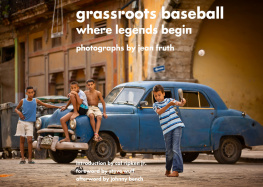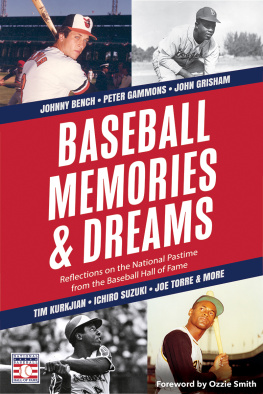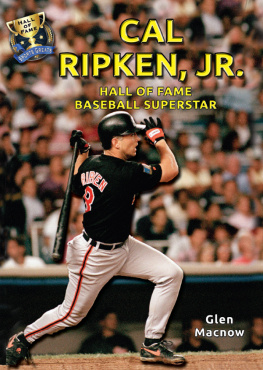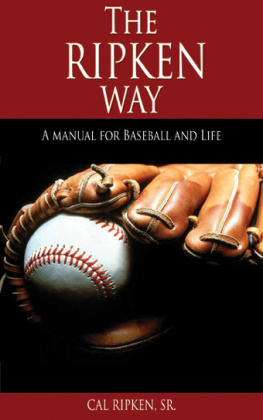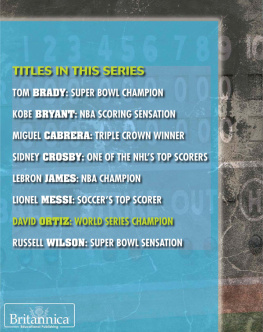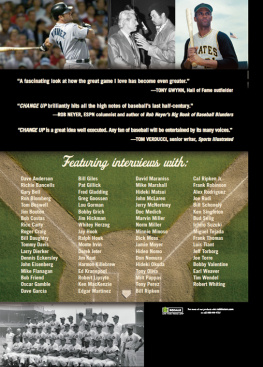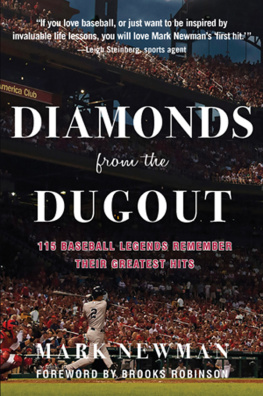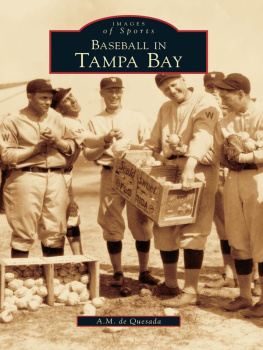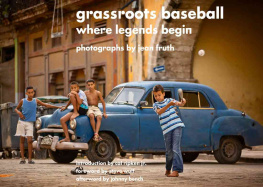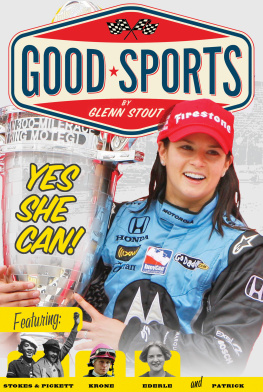




Estadio Luis Mara Herrera, Ban, Dominican Republic.
contents

Chalking home plate. Interbay Little League, Tampa, FL.
foreword
steve wulf
Home plate, home team, homestand, home run, home cooking. The language of baseball is filled with words and expressions that evoke where weve lived: alley, basement, bench, clothesline, deck, rug, upstairs, yard And it just so happens that the pentagonal home plate is actually shaped like a house.
Home sweet home. What makes baseball such an important part of our lives is that the game constantly pays tribute to where the heart is. After all, the only way to score runs is to leave home and then return.
That is also what this wonderful book has done. Jean Fruths photographs, accompanied by the voices of a chorus of baseball greats, take us on a trip around the basesand around the worldto point out the genesis of their genius and to tell us what they found once they did touch em all.
Home plate, home team, homestand, home run, home cooking. The language of baseball is filled with words and expressions that evoke where weve lived: alley, basement, bench, clothesline, deck, rug, upstairs, yard. There are chores to be donebatters need to set the table, and pitchers have to shut the door. Just walk into the kitchen, and you can nibble from a can of corn, a pickle, or a grand salami. Or you can just sip from a cup of coffee.
And it just so happens that the pentagonal home plate is actually shaped like a house, with the roof pointing toward the catcher. This is not a coincidence. In the first decades of the game, that fourth base was a circular plate or a rectangle made of wood, metal, and even marble. But then along came a former lefthander for the Baltimore Orioles named Robert M. Keating. In 1887, Keating pitched just one game in the American Association for the Orioles, giving up 11 runs in a loss before retiring from the game altogether with a sore arm.
Keating also had a keen, inventive mind, and in that same year, he patented the first rubber home base to provide the batters, mostly right-handed, with a springboard toward first base and to give them a safer arrival at home. Woe be to the baserunner who slides into a marble or metal edge at home. Even then, Keating was mindful of the journey that ballplayers regularly make.
Keating would go on to invent, among other things, the safety razor, the modern bicycle with wheels of the same size, and one of the earliest motorcycles. His contribution to baseball, though, was and is largely forgottenhis 1922 obituary in the New York Times didnt mention it, and you could probably stump a baseball diehard by asking, Who invented the rubber plate? While there may be no place like home, the irony is that there isnt any special place for the man who created one for baseball.
Something else that distinguishes home from the other bases is that its firmly planted in the ground, while the way-stations are above ground. That gives the plate the same feeling of permanence as a home. Thus, when the umpire dusts it off after every half-inning, hes sending a subliminal message to all of us to tidy up when we get home.
Yes, necessity is the mother of invention. But in the case of home plate, necessity married poetry.
How important is the sense of home to the game? Babe Ruth never forgot that he got his start at the St. Marys Industrial School for Boys in Baltimore. After Ruth became a star with the Yankees in 1920, he shepherded St. Marys band members from park to park to raise money to rebuild the main school building that had been destroyed in a fire. Ted Williams batted .406 for the Red Sox in 1941 and was a 19-time All-Star, but one of the greatest thrills of his career came in an All-Star Game he didnt play. It was in Cincinnati in 1953, and he received a thunderous ovation just for throwing out the first ball. Thats because he had just returned to the States from Korea, where he had been serving as a Marine fighter pilot.
There is no better place to get that sense of belonging than in Cooperstown, the titular birthplace of baseball and the home of the National Baseball Hall of Fame. Trace the history of baseball and America in the exhibits, refresh your memories by strolling the gallery of plaques, walk over to Doubleday Field, and think that Ruth and Joe DiMaggio and Williams and Hank Aaron played there. And if you happen to be in Cooperstown for an Induction Weekend, listen to the latest members of the club take you back to where they came from, the way Johnny Bench did in his 1989 speech:
Go back to Binger, Oklahoma In the eighth grade, Frances Tate asked her class, What do you want to be?, and I said, I want to be a major league baseball player, and they laughed I had no idea that the Hall of Fame was waiting for me.
Waiting for you on the following pages is a trip around the baseball world. Your guides will be Hall of Famers and the finest ballplayers their countries have ever produced. Youll sample a variety of cultures, rub your eyes in amazement, and marvel at the paths they took.
It may take a little while, but dont worry. Well get you home.

Naranjeros de Hermosillo groundskeeper Palomino Eduardo preparing the field at Estadio Sonora, Hermosillo, Mexico.
introduction
cal ripken, jr.
As kids we all dreamt about playing in the big leagues, making the game-winning catch, getting a hit in the World Series, or playing in a major league ballpark in front of thousands of fans. However, when we first took up the game as kids, we rarely played in front of crowds. Sometimes the fields we played on needed a little carewhen we didnt have bases, we would use cardboard boxes and use sticks in place of bats. It didnt matter though; it was the playing that mattered, the playing that created the dreams and the fun.
What I love about this book, Grassroots Baseball: Where Legends Begin , is that its about how our dreams were formed and cultivated, and about the universal language of baseball that is spoken by everyone who played the game. Whether you grew up in the United States, Japan, or the Dominican Republic, we all shared a common love. Jean Fruths beautiful and compelling photographs paint a picture of our childhoods and the paths we took to make the majors leagues. But the book is also about the common ground we share, the knowledge that we could not have played in the majors without the support of friends, family, and community.
Weve never lost our love for baseball or our gratitude for what it gave us. And Im not just talking about the players who made it to the big leagues; I mean all of us who loved the game as kids and still love and play the game like kids. Pure and simple. Thats the beauty of grassroots baseball.
Next page
